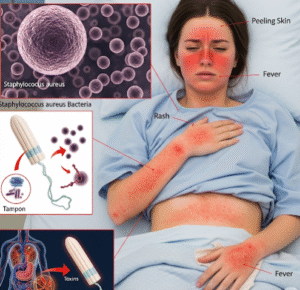Overview
Systemic Capillary Leak Syndrome (SCLS), also known as Clarkson’s disease, is a rare and potentially life-threatening disorder characterized by sudden episodes of severe leakage of plasma from blood vessels into surrounding tissues. This leads to low blood pressure, swelling, and organ dysfunction. Due to its rarity, prompt diagnosis and specialized treatment are essential for improving outcomes.
What is Systemic Capillary Leak Syndrome?
SCLS involves transient episodes where the endothelial lining of capillaries becomes abnormally permeable, causing fluids and proteins to leak into surrounding tissues. This results in hypovolemia (low blood volume), hypotension, hemoconcentration, and edema. The syndrome typically occurs in recurrent attacks lasting several days.
The cause remains unclear but is often associated with abnormal immune responses and monoclonal gammopathy in many patients.
Symptoms
- Sudden onset of low blood pressure (hypotension)
- Generalized swelling (edema), especially in arms and legs
- Fatigue and weakness
- Dizziness or fainting
- Rapid heartbeat (tachycardia)
- Abdominal pain
- Muscle cramps
- Weight gain due to fluid retention
- In severe cases, shock and organ failure
Causes
- The exact cause is unknown
- Often linked with monoclonal gammopathy of undetermined significance (MGUS)
- Possible immune system dysfunction causing capillary leakage
- Triggered by infections, intense exercise, medications, or stress in some patients
Risk Factors
- Adults aged 40–60 years (most common)
- History of recurrent unexplained episodes of hypotension and edema
- Presence of monoclonal gammopathy detected in blood tests
- Family history is generally not associated as it is considered sporadic
Complications
- Hypovolemic shock due to severe fluid loss
- Acute kidney injury from low blood pressure
- Multi-organ failure during severe attacks
- Thrombosis due to hemoconcentration
- Death if untreated or misdiagnosed
Prevention
- Avoid known triggers such as infections and extreme physical stress
- Close monitoring during infections or illnesses
- Early medical intervention at first signs of an episode
- Regular follow-up in specialized centers
Treatment Options in Korea
South Korea provides advanced care for rare conditions like SCLS in major tertiary hospitals with expertise in immunology, hematology, and critical care.
Diagnosis
- Clinical evaluation based on typical symptoms and episodes
- Blood tests showing hemoconcentration and hypoalbuminemia
- Detection of monoclonal gammopathy by serum protein electrophoresis
- Exclusion of other causes of shock and edema
Treatment Approaches
- Acute Episode Management
- Intensive care support including intravenous fluids to maintain blood pressure
- Vasopressors if needed to support circulation
- Close monitoring of kidney function and electrolytes
- Treatment of any underlying infection or trigger
- Long-term Management
- Prophylactic therapy to reduce frequency of attacks such as:
- Intravenous immunoglobulin (IVIG)
- Theophylline and terbutaline (to stabilize capillary membranes)
- Corticosteroids in some cases
- Avoidance of known triggers
- Prophylactic therapy to reduce frequency of attacks such as:
- Supportive Care
- Monitoring for and managing complications like kidney injury or thrombosis
- Patient education and emergency planning













